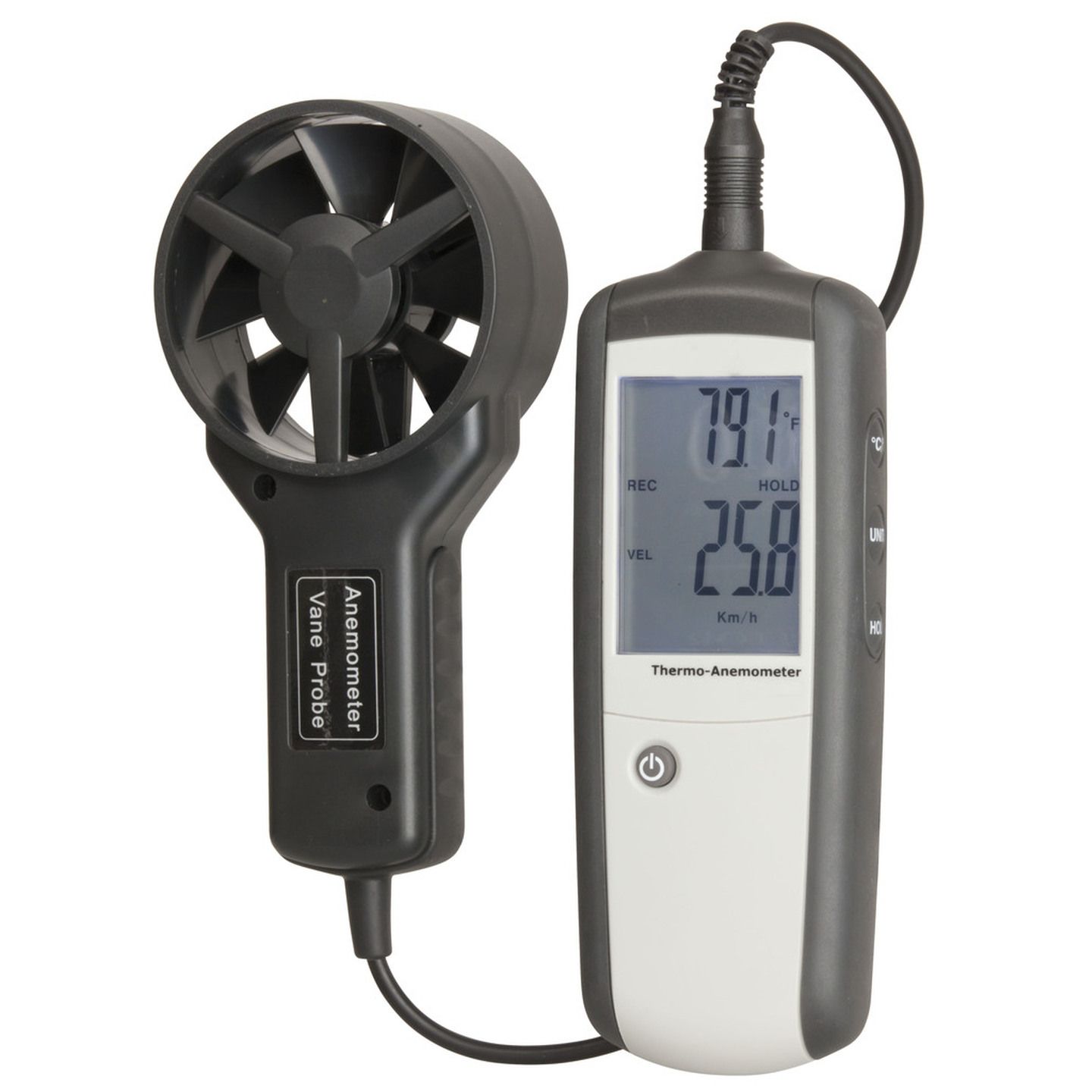All You Required to Know Concerning Anemometers: How They Work, Why They Issue, and Where to Use Them
Anemometers, though commonly ignored in the world of scientific tools, play an important role in various fields, using valuable understandings into wind rate and airflow patterns. As we delve into the details of anemometer technology, we will reveal the internal operations of these tools, their relevance, and the crucial considerations when choosing the appropriate anemometer for particular applications.

Anemometer Essentials
An essential instrument utilized to measure wind speed and instructions, the anemometer plays an essential function in meteorology and different industries. An anemometer normally is composed of three or 4 cups that rotate in the wind, a vane that points into the wind, and sensing units to track the activities or turnings.
There are numerous kinds of anemometers available, including mug anemometers, vane anemometers, hot-wire anemometers, and sonic anemometers, each with its distinct features and applications. Mug anemometers are typically made use of for basic wind speed measurements, while vane anemometers are chosen for directional dimensions. Hot-wire anemometers are ideal for low airspeeds, and sonic anemometers are suitable for high-precision dimensions in research study and commercial setups. Understanding the essentials of anemometers is vital for precise wind information collection and evaluation throughout various industries.
Principles of Anemometer Operation
Building on the fundamental understanding of anemometer fundamentals, the principles of anemometer operation illuminate the mechanics behind wind rate and instructions measurements. Mug anemometers, for circumstances, have 3 or even more mugs that record the wind, triggering them to spin much faster as the wind speed boosts. Hot-wire anemometers depend on a heated wire that cools down as wind passes over it, with the rate of cooling establishing the wind rate.
Importance of Anemometers
The value of anemometers in meteorology and different sectors can not be overstated. Anemometers play a vital duty in determining wind rate and direction, offering important information for weather projecting, climate studies, environmental tracking, and aviation operations. Meteorologists count on anemometers to collect precise wind information, assisting them recognize weather patterns, forecast tornados, and problem prompt cautions to the public. In industries such as construction, agriculture, renewable resource, and maritime operations, anemometers are used to enhance procedures, make certain safety and security, and enhance effectiveness. Wind farm drivers make use of anemometers to evaluate wind problems and make the most of power production from wind turbines. In the maritime field, anemometers aid ship navigation by offering real-time wind information to captains, assisting them make notified choices to guarantee secure voyages. Generally, anemometers are vital devices that contribute substantially to safety, effectiveness, and notified decision-making in weather forecasting and a wide range of sectors.
Applications Throughout Various Industries
In the sustainable energy field, anemometers play a crucial function in analyzing wind conditions for wind farm placements, ensuring optimal power manufacturing. Industries like construction and mining utilize anemometers to keep track of wind rates, important for security protocols, specifically when working at elevations or in open-pit mines where solid winds can posture dangers. In agriculture, anemometers aid farmers in taking care of plant spraying by giving real-time data on recommended you read wind speed to avoid drift.

Picking the Right Anemometer for Your Requirements
Choosing the proper anemometer customized to your details needs is necessary for obtaining exact wind rate and instructions dimensions. When picking an anemometer, consider factors such as the intended application, needed measurement array, environmental conditions, and wanted functions. For basic purposes, a mug anemometer appropriates for determining wind rate, while a vane anemometer offers wind direction information. Hot-wire anemometers are suitable for reduced airspeed measurements, and ultrasonic anemometers use high accuracy and longevity.

Conclusion
Finally, anemometers play an important role in gauging wind speed and direction throughout various sectors. Comprehending the principles of anemometer procedure is vital for choosing the right gadget for details requirements. From meteorology to aeronautics, anemometers are important devices for gathering accurate information and making sure safety and security in different applications. When picking the most suitable gadget for measuring wind conditions., it is vital to consider the relevance of anemometers in order to make informed decisions.
There are numerous kinds of anemometers available, including mug anemometers, vane anemometers, hot-wire anemometers, and sonic anemometers, each with its one-of-a-kind features and applications. Cup anemometers are typically utilized for standard wind rate get more dimensions, while vane anemometers are preferred for directional measurements. Hot-wire anemometers look at here now are suitable for low airspeeds, and sonic anemometers are suitable for high-precision dimensions in study and commercial setups.Structure on the fundamental understanding of anemometer basics, the principles of anemometer operation elucidate the mechanics behind wind speed and direction dimensions. For basic functions, a cup anemometer is appropriate for determining wind speed, while a vane anemometer offers wind direction data.